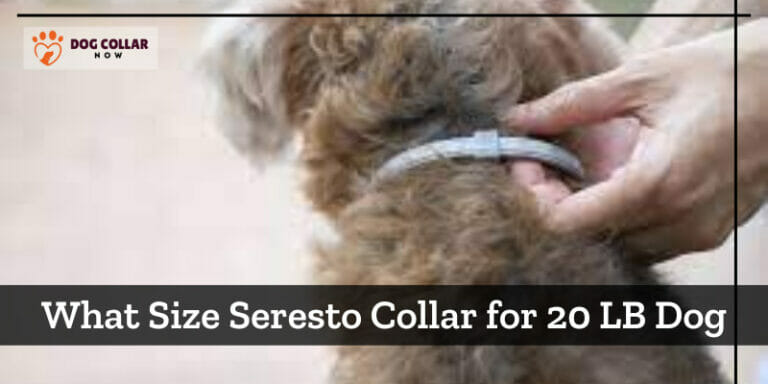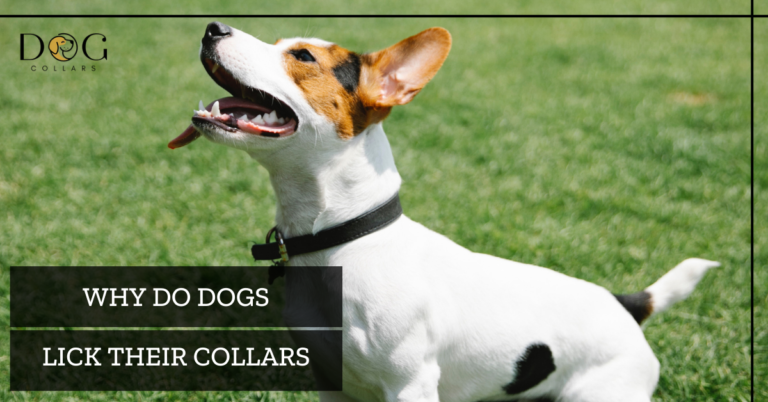Dog Harness Vs Prong Collar – Battle for Effective Training

Are you struggling to find the perfect leash for your furry friend? With so many options available, it can be tough to decide between a dog harness and a prong collar. Both have their pros and cons, but which one is better for your pup?
The main difference between a dog harness and a prong collar is their purpose and design. A dog harness is used for control, weight distribution, and reducing strain on the neck during walking and activities. In contrast, a prong collar has metal prongs or spikes that provide a correction or aversive stimulus to discourage pulling or unwanted behaviors.
I will explore the distinct features for dog harness vs prong collar, as well as the various types of each. We’ll also provide some tips on what to consider when purchasing either option. So whether you have a reactive or strong dog that pulls on walks, keep reading to discover which option may work best for you!
Dog Harness Vs Prong Collar – What’s the Difference Between
Dog harnesses and prong collars are two popular options for dog owners who want to keep their pets safe on walks. A dog harness is a type of walking accessory that fits over the pet’s body, while a choke collar wraps around the neck.
One of the main differences between these two accessories is in how they function. Dog harnesses work by distributing pressure across a larger area. Which can help prevent injuries to your pup’s trachea or neck. Prong collars, on the other hand, rely on applying pressure through small metal spikes when dogs pull.
Another difference lies in their design variations. Dog harnesses come in various styles such as no-pull or easy-walk designs that make it easier for pet owners to control their furry friends during walks. Meanwhile, there are also different types of prong collars like chains and plastic-tipped ones.
Choosing between a dog harness and a choke collar depends on various factors such as breed, training needs, behavior issues, and personal preference. It’s essential to understand what each option entails before deciding which one works best for you and your pup!
Dog Harness – Pros and Cons
Dog harnesses have become increasingly popular among dog owners as an alternative to traditional collars. Now we’ll discuss a few pros and cons of dog harnesses.
| Pros | Cons |
|---|---|
| Evenly distributes pressure, beneficial for dogs with health issues | Some harnesses may cause discomfort or rubbing |
| Helps prevent choking and tracheal damage from leash pulling | Certain harness types may not be effective for strong dogs |
| Offers more control during walks with back attachment point | Incorrectly fitted harnesses can restrict movement or cause discomfort |
| Various types are available to suit different needs (walking, training, etc.) | Selecting the right size, shape, and material type is crucial for comfort |
By carefully considering these pros and cons, as well as taking into account your dog’s specific needs and any existing health conditions. You can make an informed decision when choosing a suitable harness. Remember to prioritize the comfort of your pet, safety, and freedom of movement when selecting a harness.
Types of Dog Harness
When it comes to choosing a dog harness. There are various types available in the market. Each type serves a specific purpose and is suitable for different breeds and sizes of dogs.
1. No-pull dog vest:
One of the most common types is the no-pull dog vest which helps prevent your pup from pulling on its leash during walks.
2. Front-clip harness:
The front-clip harness also known as the easy walk harness, has a ring at the front that redirects the attention of the pet toward you when they start to pull.
3. Back-clip harness:
There’s also the back-clip harness which attaches to your dog’s leash at their back and offers more control over larger or stronger dogs.
4. Step-in harness:
The step-in harness requires less effort than other styles as it only needs to be slipped over your pet’s head and clipped around their waist.
5. Soft mesh harness:
For smaller breeds, there’s also a vest-style or soft mesh harness which provides comfort while still allowing for control over them.
6. Sports-style harness:
If you have an active pup who enjoys swimming or running off-leash, consider getting them a sports-style harness with reflective materials for safety purposes.
7. Safety Harness:
Specifically designed for car travel, these dog vests have attachment points that can be secured to a seat belt, ensuring your dog’s safety during car rides.
8. Mobility Support Harness:
These dog vests are specifically designed to assist dogs with mobility issues, providing support and stability for their body and limbs.
Selecting the right type of dog vest depends on your pet’s size, personality, behavior patterns, activity levels, and any health concerns they may have.
Better option
As a dog owner who has experienced the benefits of using a dog harness firsthand. I highly recommend incorporating a vest into your furry friend’s daily routine. The added comfort, control, and safety make it a worthwhile investment.
Based on my personal experience, I found that a front-clip vest worked exceptionally well for my strong-willed dog who tended to pull during walks. It provided me with better control by redirecting his forward movement and discouraging pulling behavior. The even distribution of pressure across his chest ensured his comfort and eliminated the risk of tracheal damage.
Prong Collar – Pros and Cons
Prong collars have been a topic of controversy in the dog training world. Now we’ll discuss a few pros and cons of prong collars.
| Pros | Cons |
|---|---|
| Can be effective for controlling strong dogs who pull excessively | Improper use can cause pain, discomfort, or tracheal damage |
| Quick results are possible when used properly under professional guidance | Requires experienced handlers who understand the correct usage |
| May provide control for reactive dogs on walks | Some view the use of prong collars as cruel or inhumane |
| Offers an alternative for dogs that haven’t responded to other methods | Can create fear or anxiety due to the association of punishment with walking |
While prong collars have their benefits for certain dogs when used properly under professional supervision. They come with risks and potential harm if misused.
It’s essential always to consider other training techniques such as positive reinforcement techniques before resorting to this type of equipment.
Types of Prong Collars
Prong collars, also known as pinch collars, come in different types and designs. Some common types include:
1. Traditional Prong Collar:
This type consists of metal links with prongs that face inward toward the dog’s neck when worn.
2. Quick-Release Prong Collar:
Similar to the traditional prong collar, but with a quick-release mechanism for easy removal.
3. Martingale Prong Collar:
The martingale collar type combines a prong collar with a martingale loop that tightens slightly when the dog pulls, providing additional control.
4. Plastic Prong Collar:
A variation of the traditional prong collar, made of plastic links with rounded tips for a milder effect.
These different types of prong collars offer varying levels of correction and control. It’s important to note that prong collars should only be used under professional guidance and with proper knowledge of their correct usage.
Better option
As a dog owner and advocate of positive reinforcement training methods, I do not personally recommend the use of prong collars. We do use the prong collar for our dogs. While prong collars may provide quick results for controlling strong or reactive dogs. The potential risks and negative consequences outweigh any perceived benefits.
Effective alternatives to prong collars exist for addressing pulling or reactivity issues. Positive reinforcement training builds trust and strengthens the bond with my furry companion.
What To Consider When Buying A Dog harness Or Prong Collar?
When it comes to choosing between a dog harness and a prong collar. There are several factors that you should consider before making a decision.
- Think about your pup’s size and strength. If you have a large and strong dog who pulls on the leash, then a no-pull vest or prong collar might be more effective in controlling them during walks.
- Followed by consider your training goals. Are you looking for positive reinforcement methods? Then a no-pull vest or gentle leader might be better options as they discourage pulling through positive training techniques rather than punishment.
- Consider also any medical issues your pup may have. For example, if your dog has respiratory problems or trachea sensitivity, then avoid using choke chains or collars that tighten around the neck.
- Evaluate the level of control you want over your dog during walks. A prong collar is designed to provide more immediate control compared to a vest. However, it requires proper usage so always make sure to consult with professional trainers beforehand.
Always prioritize safety when making any decisions regarding equipment for your furry friend!
Conclusion
In conclusion, dog harnesses offer clear advantages over prong collars in terms of comfort, safety, and effectiveness. Harnesses distribute pressure evenly, reducing the risk of tracheal damage or choking. They provide better control during walks, with various types available for different needs and dog breeds.
Improper use of prong collars can cause pain and harm to dogs, outweighing any quick results they may offer. When choosing between a dog harness and a prong collar, consider your dog’s size, strength, training goals, and medical conditions. Prioritize your dog’s well-being and use positive reinforcement training methods to foster trust and strengthen your bond.
FAQs
Do vets recommend collars or harnesses?
Yes, vets generally recommend harnesses over collars for dogs.
Do dog trainers use prong collars?
Some dog trainers may use prong collars, but their use is controversial and not recommended by all trainers.
What is safer dog harness or collar?
A dog vest is generally considered safer than a collar for restraining and controlling dogs.
Why do people hate prong collars so much?
People dislike prong collars due to concerns about causing harm or pain to dogs, a preference for positive and humane training methods, and the belief that safer and more effective alternatives exist.
What type of collar is best for dog training?
A martingale collar or a flat buckle collar is commonly recommended for dog training.








